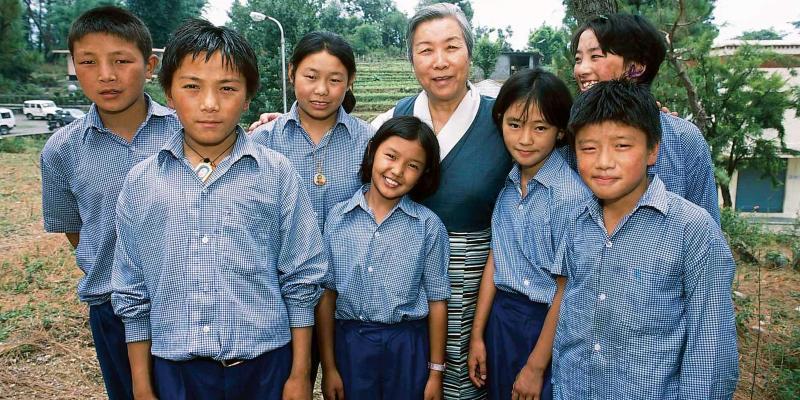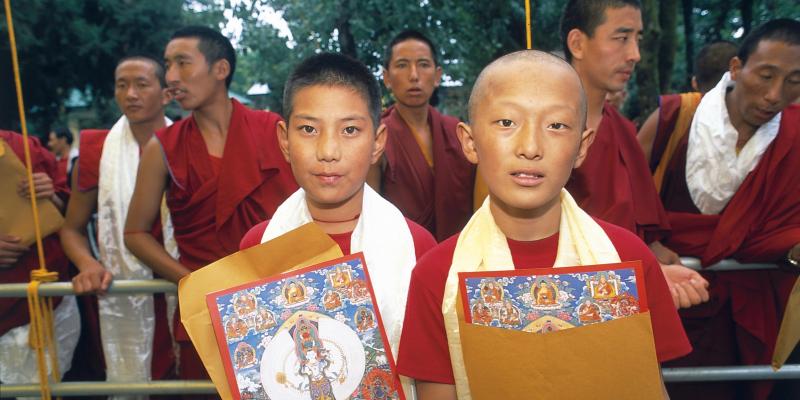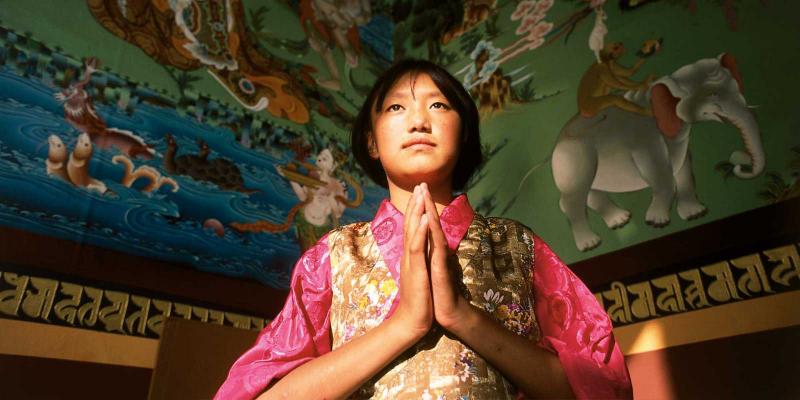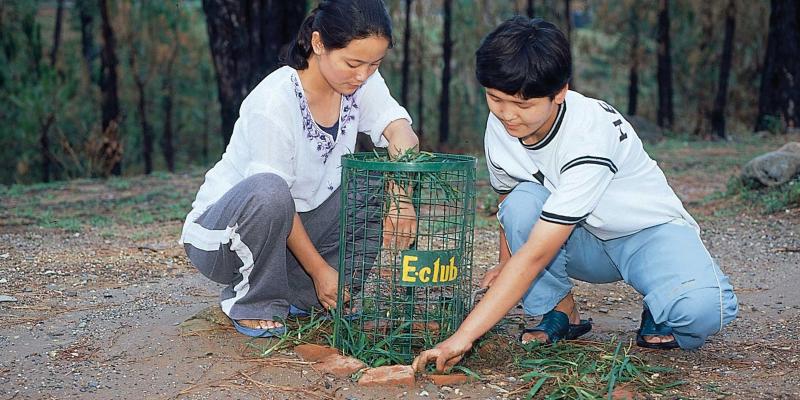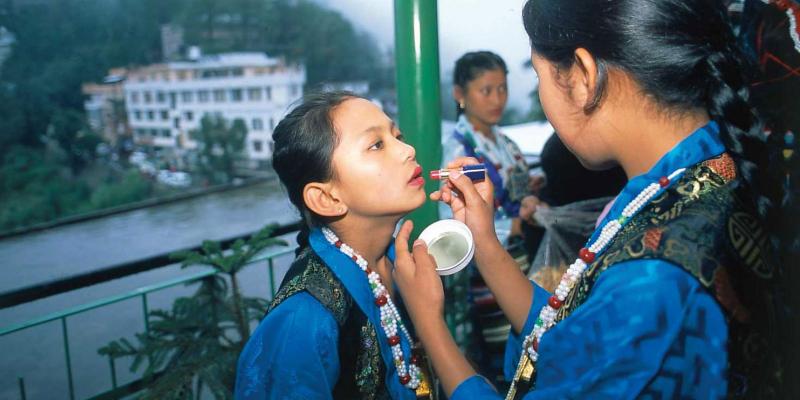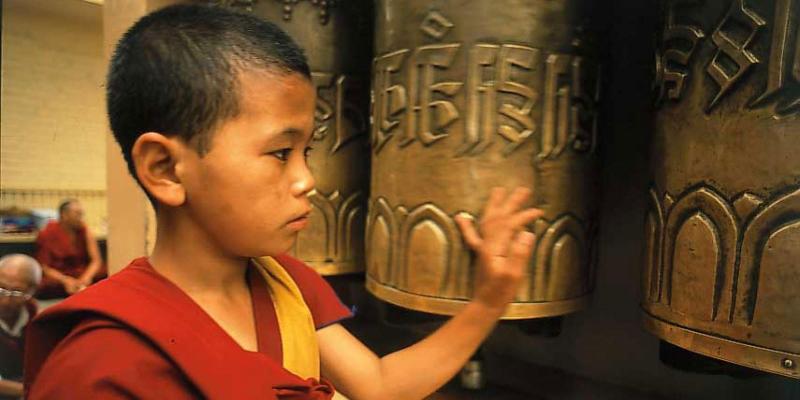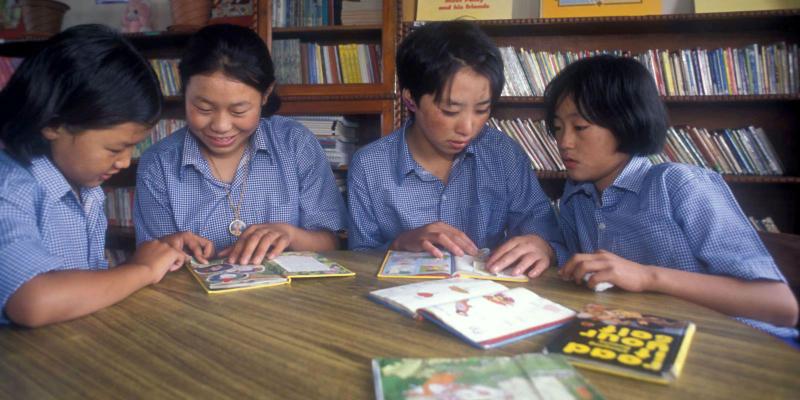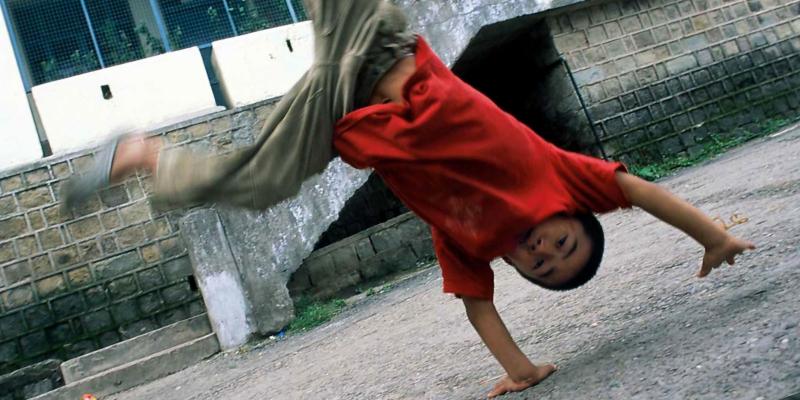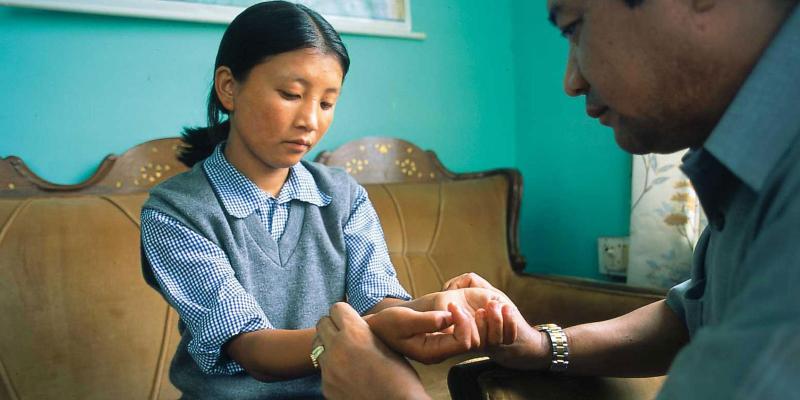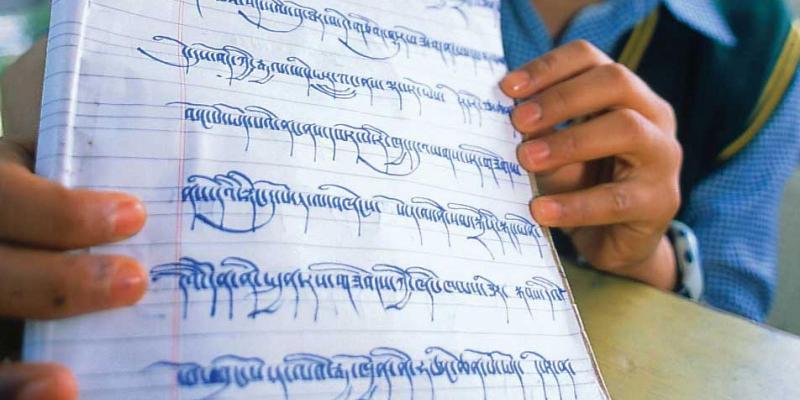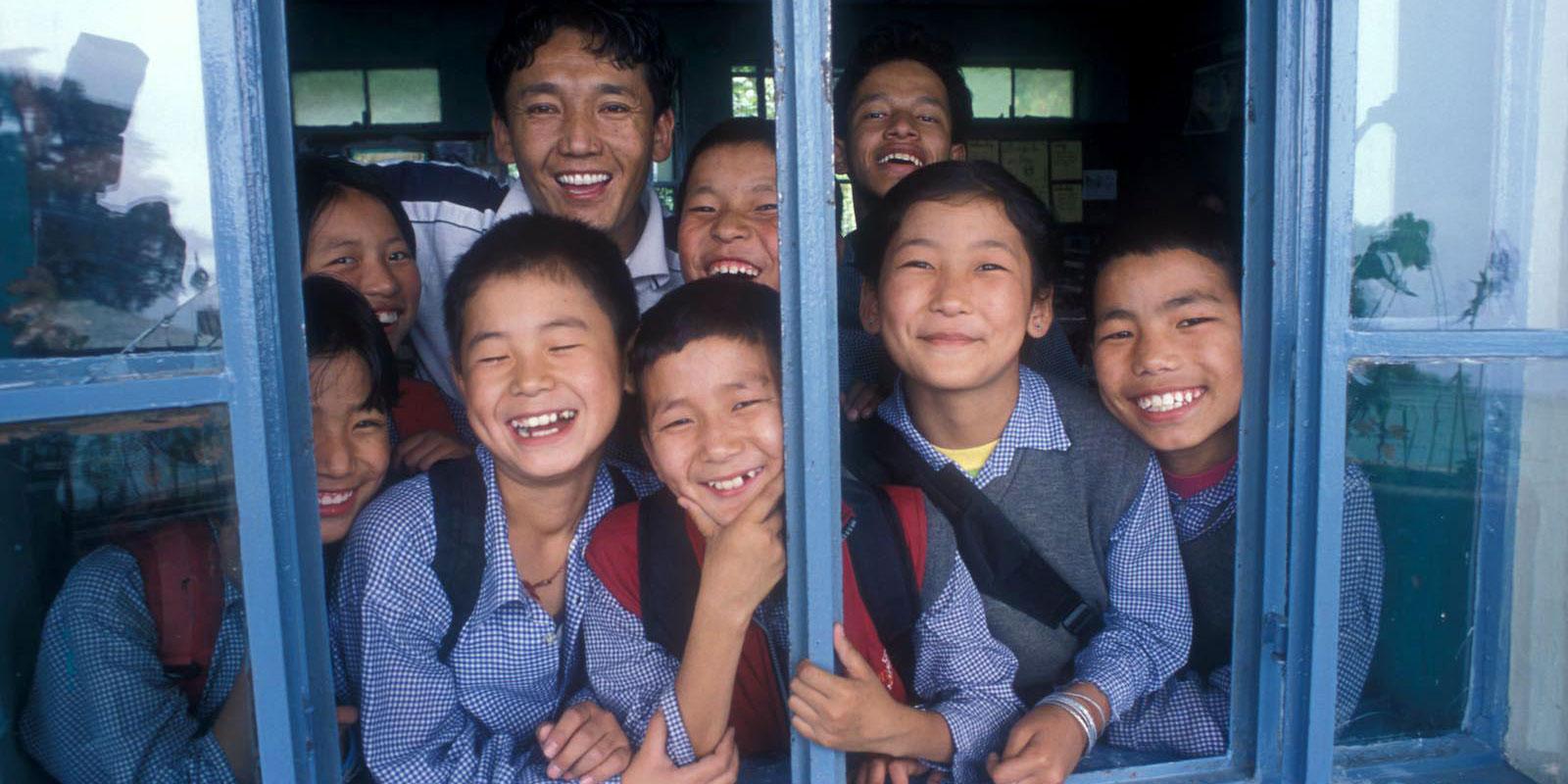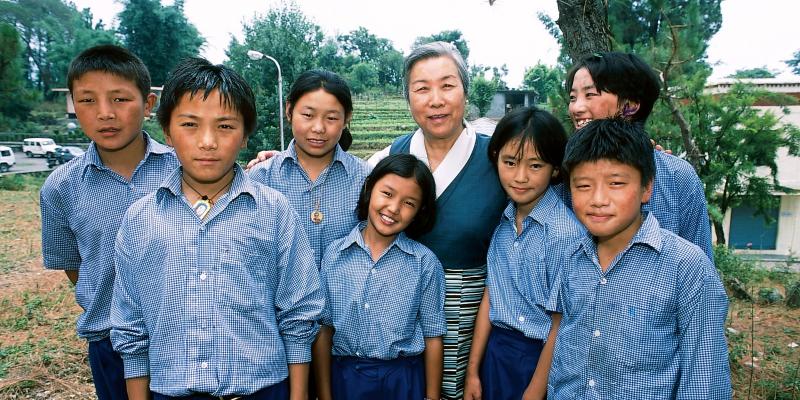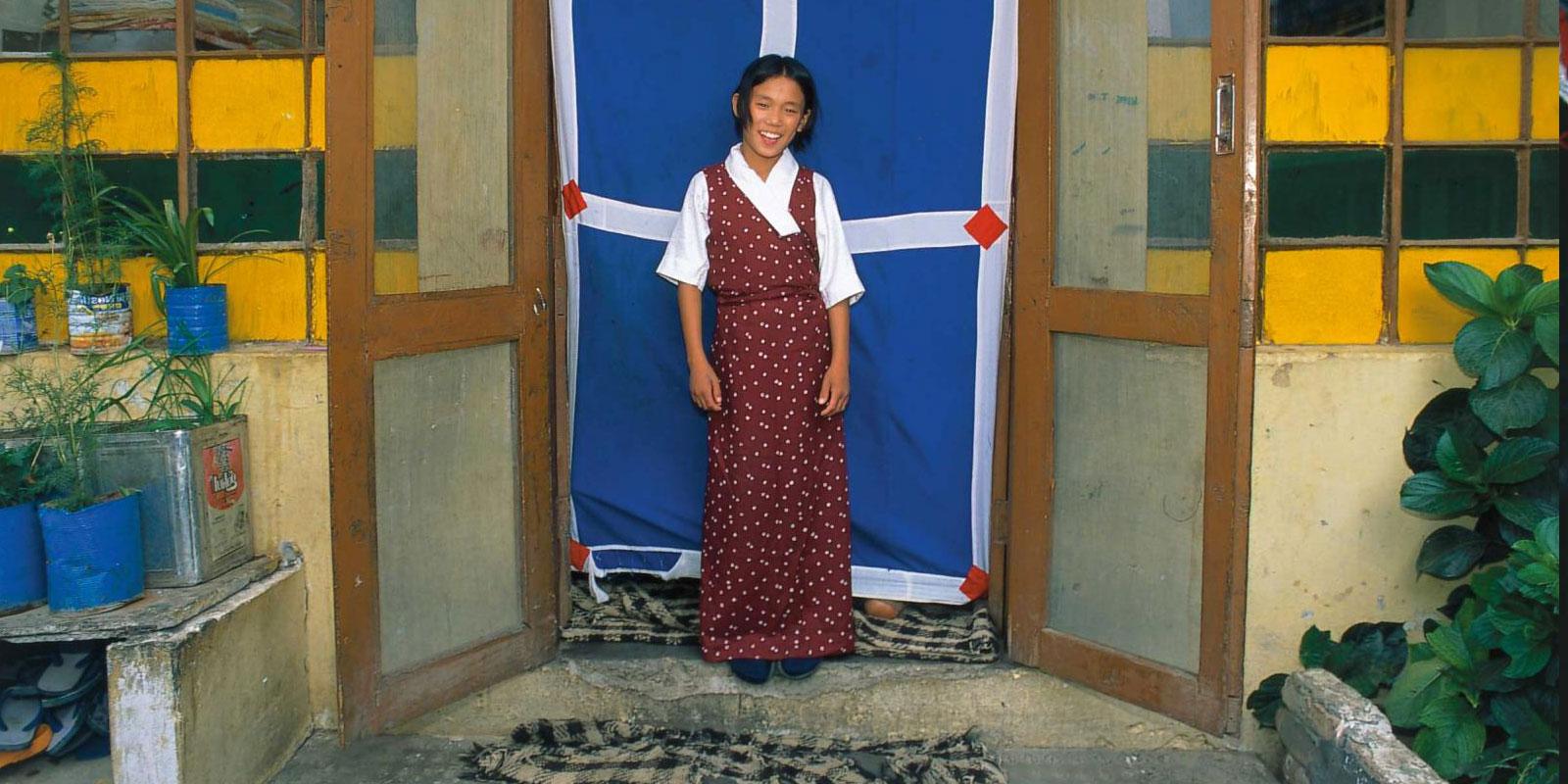
Tibetans love beautiful clothes, jewellery and large shaggy hats. They plait precious stones into their hair and sew silver coins and jewellery into their belts and clothes. But the Tibetan refugees in India often dress simply. They had to leave everything they owned in Tibet.
“The only thing missing from my wardrobe is a digital watch, which would make it easier to get to school on time,” says Lamo, who lives in the Tibetan children’s village in Bir.
“My mother is still in Tibet and I haven’t seen her since I escaped. But compared with those children who remain in Tibet, I feel lucky. I can go to school and be free.”
Lamo admires Jetsun Pema because she has created the Tibetan children’s villages and made it possible for refugee children to go to school and have a new home in India. “I’ve never met her, but if I got the chance I would say thanks. And ask how old she is!”
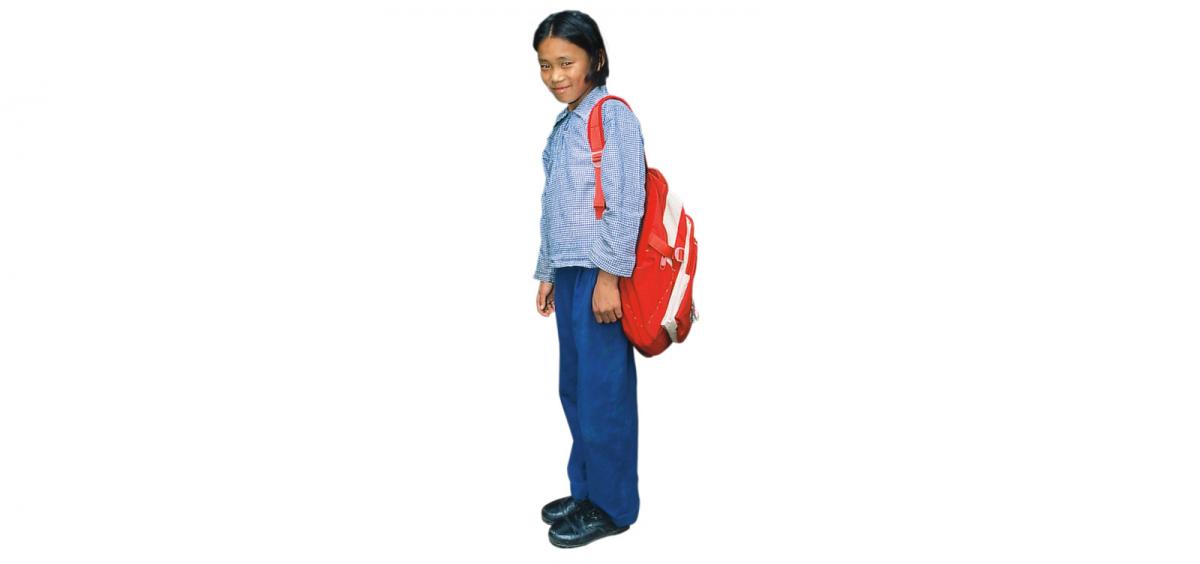
School Uniform
“We get two uniforms from the school every year. The uniforms for girls and boys are similar: blue trousers and blue-checked shirts. We wash one of the uniforms every Wednesday and Saturday, so we always have a clean one. At the end of the school year the children’s village’s tailor takes measurements for next year’s uniform. We hand the old ones in, so a younger student can have it if theirs get worn out.”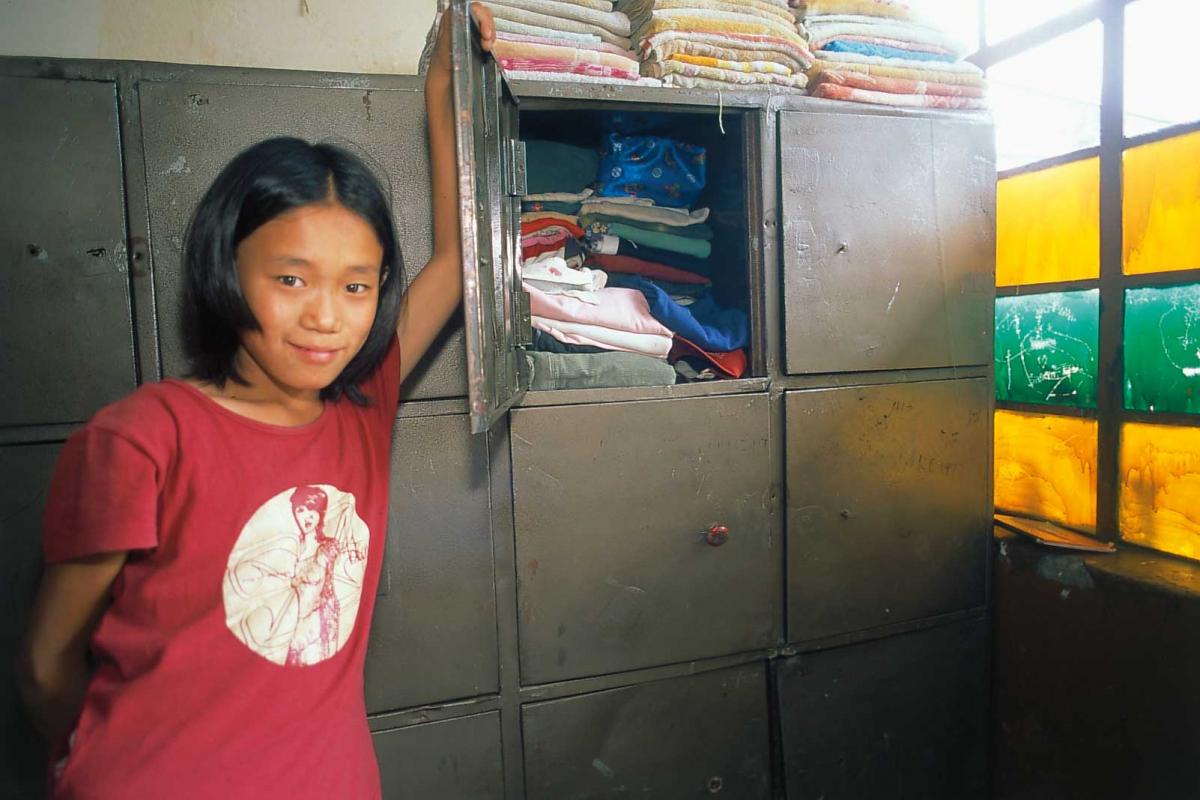
The closet
“I keep my clothes in a locker just inside the door in the house. Our home mother makes sure we keep the lockers tidy. It’s important when there are so many of us!”T-shirt and trousers are favourites
“It doesn’t matter that my clothes are a little torn. My older sister gives me her clothes when she out-grows them. That’s what we do. The older ones take care of the younger ones. We only throw away clothes that are totally worn out. We also lend each other clothes.Chupa
“The Chupa is our traditional Tibetan costume (see top photo). My mother gave it to me. She bought it at the market in Lhasa and packed it when I escaped to India. It was too big then, but now it’s just right. I am really glad that I have it; it’s the only memory I have of my mother.”
Rinchen’s wardrobe
Rinchen lives in the children’s village with his two sisters, Dolkar, 8, and Tso, 9. They came here from Tibet and have not seen their parents for many years. Many families do not even dare to write because the Chinese government opens and reads letters. But Rinchen has received a parcel containing Tibetan cheese and a chupa, a traditional Tibetan coat.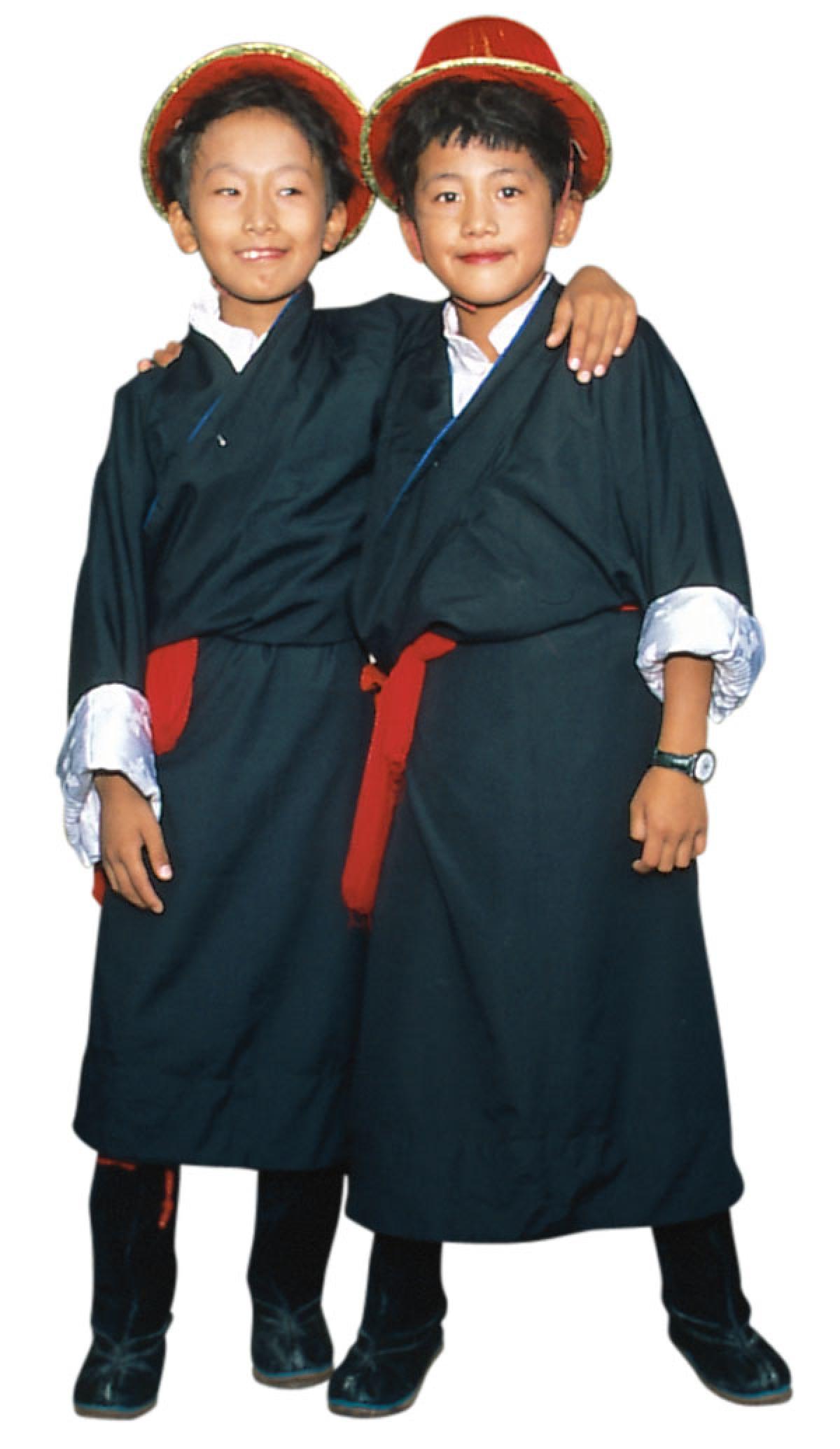
Chupas suit everyone
Both girls and boys in Tibet wear a chupa, an ankle-length coat or dress that is held together with a belt. Usually it is made from simple material and is one colour. For a party is can be made of silk with beautiful patterns. The man’s chupa has long sleeves and is made of thicker material than the woman’s sleeveless dress variety.
Married or unmarried?
It’s easy to see if a Tibetan woman is married or unmarried because only married women wear a striped apron over their chupas. The apron should match the dress. A married woman can own many hundreds of aprons, in order to change her style every day of the year!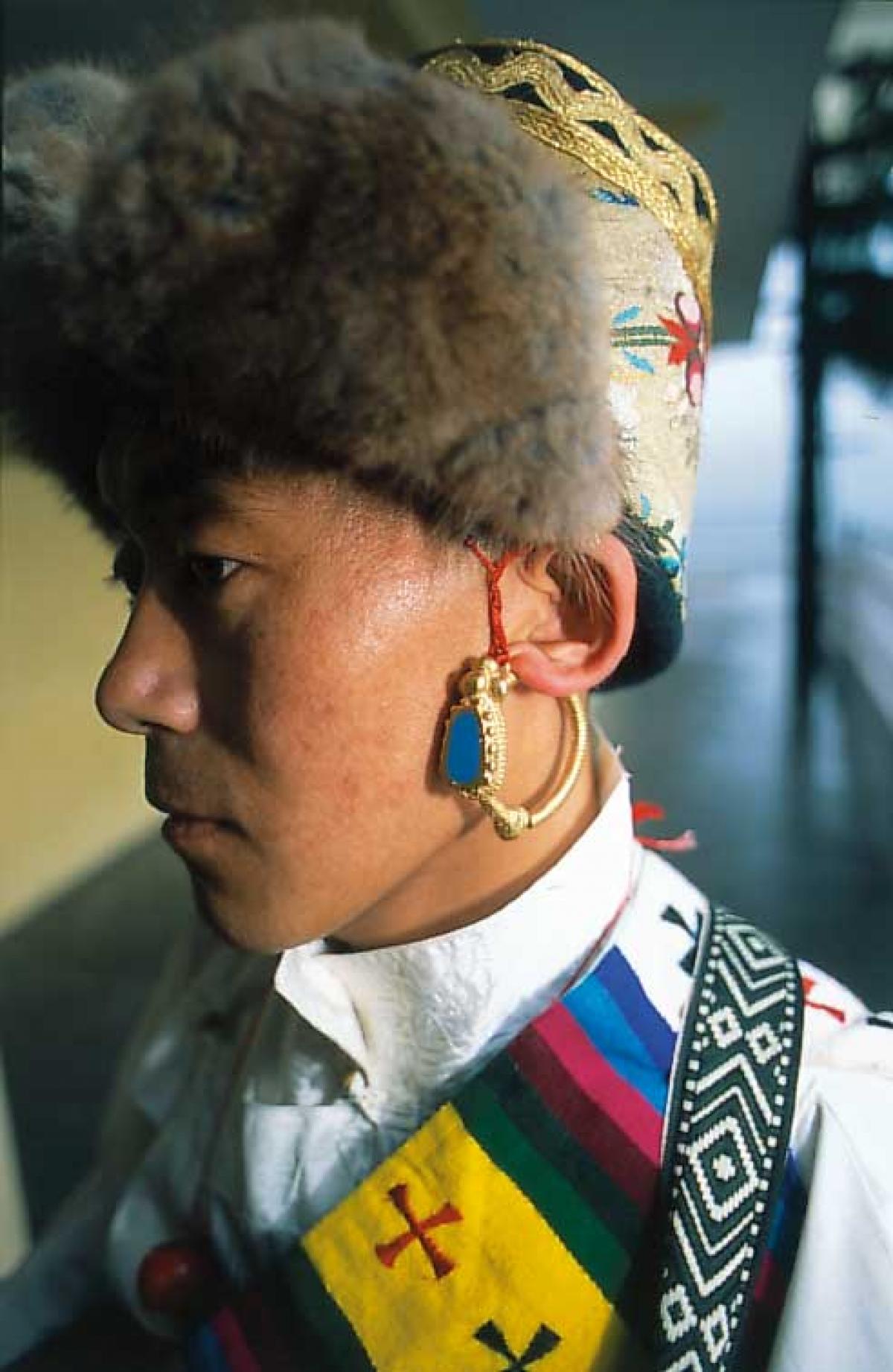
Hats show who you are!
In Tibet, you must wear something on your head to protect you from the cold. And to look good! The hat a Tibetan wears depends on if they are a monk, musician, woman, or man or where they live. In the children’s villages hats are mostly used when the children act, dance or perform music.Related stories
Långgatan 13, 647 30, Mariefred, Sweden
Phone: +46-159-129 00 • info@worldschildrensprize.org
© 2020 World’s Children’s Prize Foundation. All rights reserved. WORLD'S CHILDREN'S PRIZE®, the Foundation's logo, WORLD'S CHILDREN'S PRIZE FOR THE RIGHTS OF THE CHILD®, WORLD'S CHILDREN'S PARLIAMENT®, WORLD'S CHILDREN'S OMBUDSMAN®, WORLD'S CHILDREN'S PRESS CONFERENCE® and YOU ME EQUAL RIGHTS are service marks of the Foundation.



